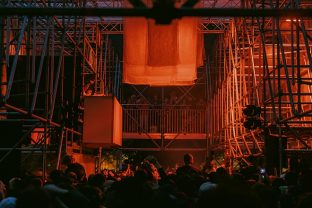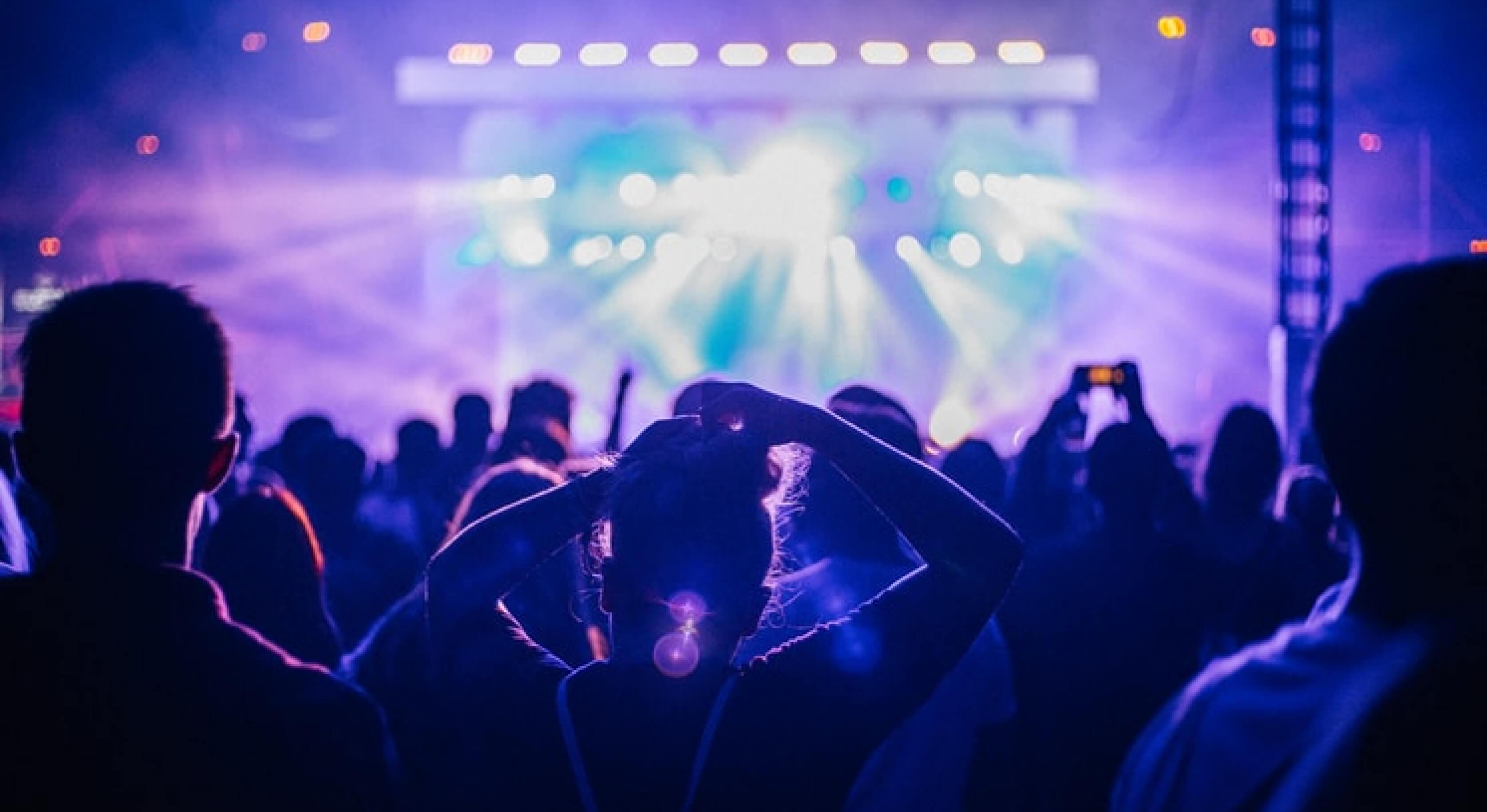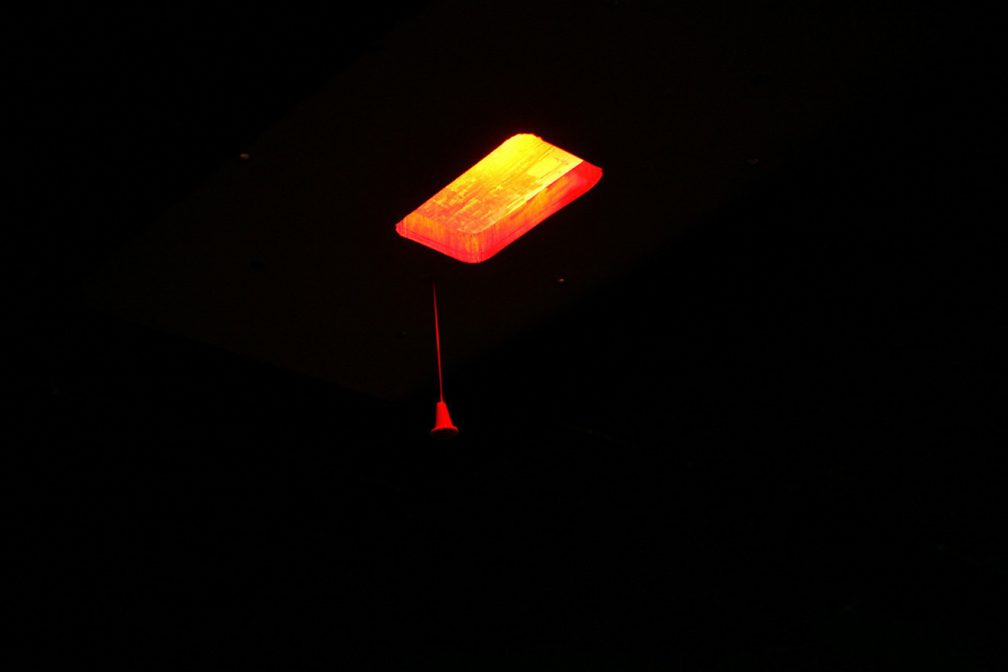 Features
Features
25 parties that changed dance music forever
The history of dance music is made on the floors of night clubs, warehouses, pubs and even beaches. Parties across the globe – from London to Chicago, Berlin to Goa – have contributed to the progression of the culture that we engage with weekend in, weekend out. And that's what makes a party truly great: the sense that, while you dance, revolutionary things are happening around you.
Think Ron Hardy at the Muzic Box, Alfredo at Amnesia, Sven Väth at The Omen, Erol Alkan at Trash...the names and places go on. These are the DJs and the dancefloors where new sounds, styles and approaches to clubbing have developed. We've charted the 25 most important parties (including residencies, club nights and actual venues) and they appear below, in chronological order.
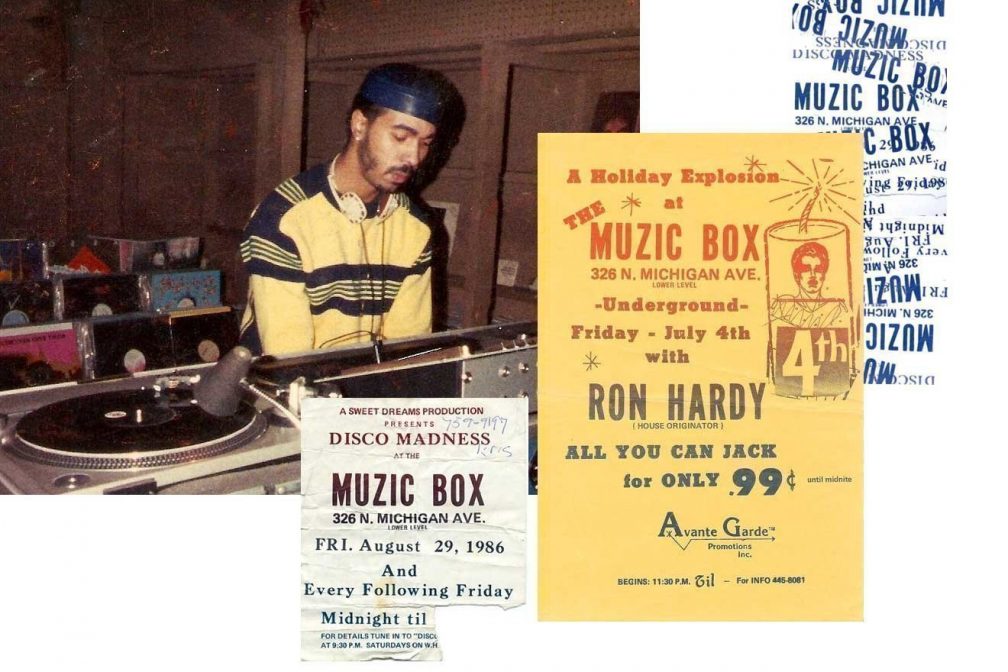
1 Muzic Box
South Jefferson Street, Chicago The late, great Frankie Knuckles is known as the Godfather of House. His sets at Chicago's Warehouse club created the name, after all. However, where Knuckles transitioned disco to soulful proto-house between 1977 and 1982, it was his successor Ron Hardy, when the venue was renamed the Muzic Box, who truly plunged into the stark instrumental style we recognise today. Amid the Muzic Box's alcohol-free drug mayhem he first played 'Acid Trax', and encouraged early Detroit producers such as Derrick May. He died of AIDS in 1992.
See also: Frankie Knuckles at The Powerplant, Chicago
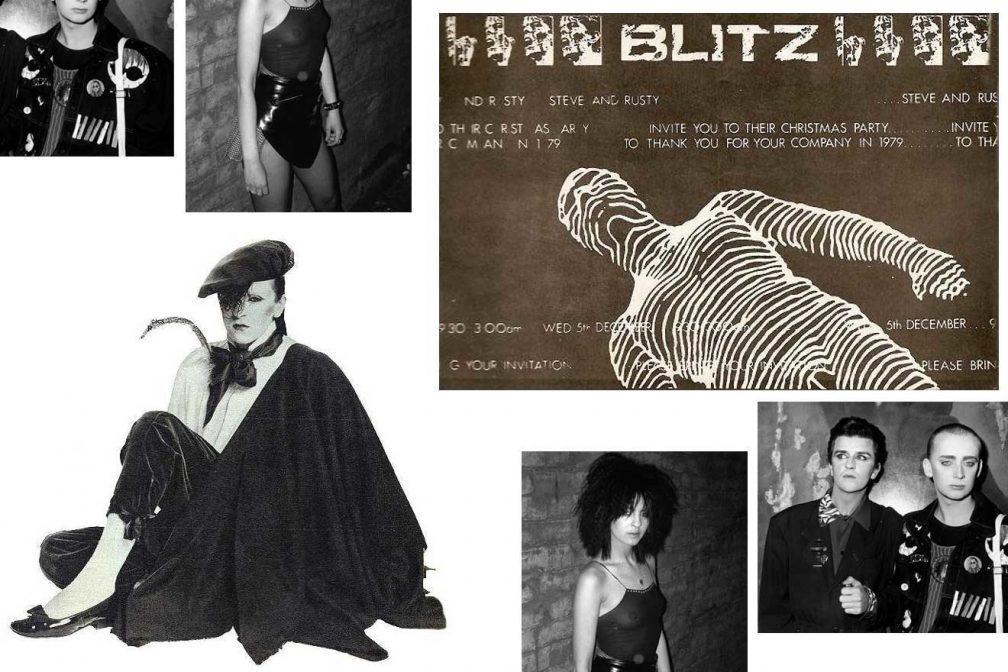
2 The Blitz Club
Great Queen Street, London The Blitz Club, founded at the end of 1979 by Steve Strange (who died this February) had a vast influence on pop. In a Covent Garden side street, it played host to a generation of post punks who dressed up wildly, outrageous make-up for both sexes, preposterously dandified, to a soundtrack of synthesized Euro-disco, Kraftwerk, Roxy Music and Bowie provided by DJ Rusty Egan. 1980s fancy dress is mostly based on the Blitz Kids, who included Spandau Ballet, Boy George and Princess Julia.
See also: The Rum Runner, Birmingham
Images of Steve Strange and friends courtesy The Blitz Club
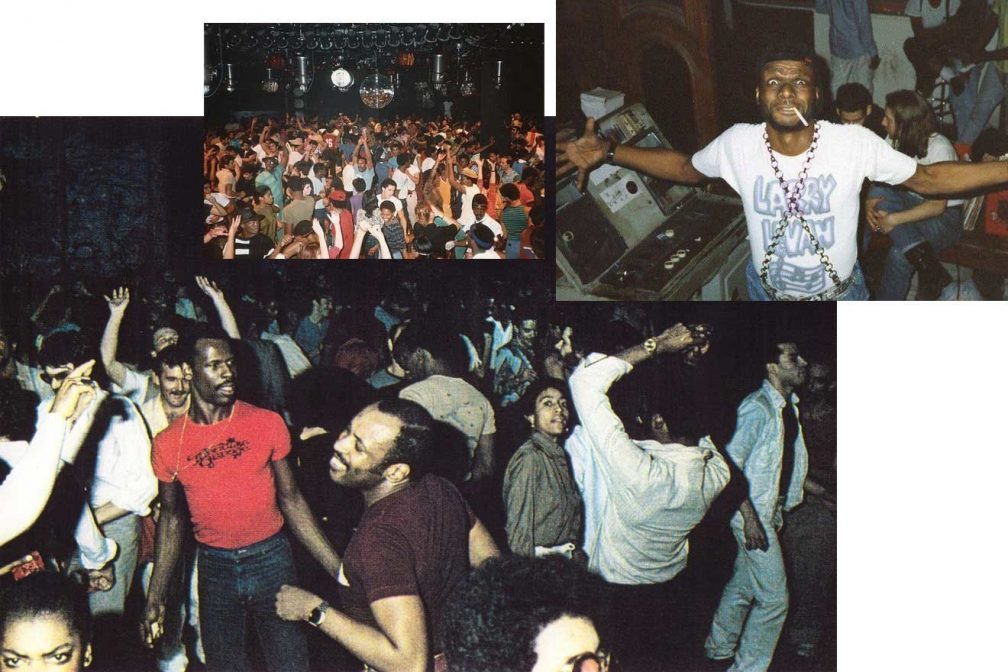
3 PARADISE GARAGE
King Street, New York City Arguably the most legendary nightclub of all, the Paradise Garage opened in 1977 but truly came into its own when the American public suddenly turned against disco during 1979. Thus the sound that had originally risen from wild gay, black New York clubs went back there, back underground and, with DJ Larry Levan on the decks, hit its stride, moving towards something cosmically electronic, a journey that took drugged-up dancers through the night, watched over by the venue's famously lurid murals.
See also: Salvation, West 43rd Street; The Loft, Broadway - both New York
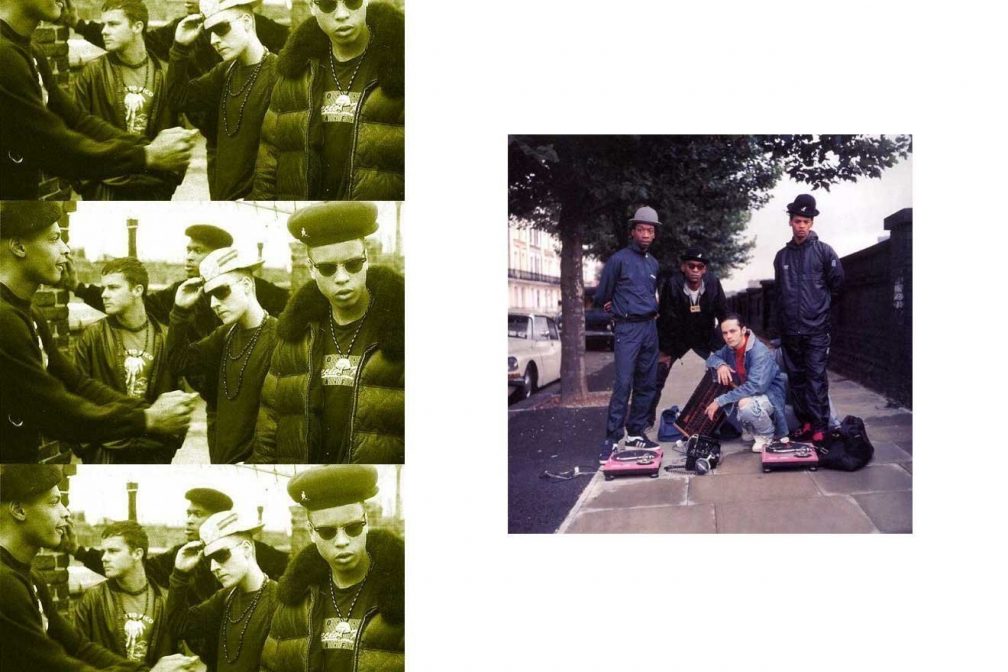
4 THE WILD BUNCH
The Dug Out, Park Row, Bristol In 1994 Mixmag coined 'trip hop', a catch-all term for downtempo that fused dub, hip hop, soul and electronica. Its origins lay a decade earlier. Punk iconoclast Mark Stewart brought back tapes of early hip hop from New York which he gave to Robert del Naja of the Wild Bunch, a party collective. They'd be played alongside the pounding dub of DJ Grant Marshall in a hot little Bristol venue, eventually closed down in 1986. Del Naja and Marshall became better known as 3D and Daddy G of Massive Attack.
See also: Funk Night at Fosters, Bristol
Images via Red Lines
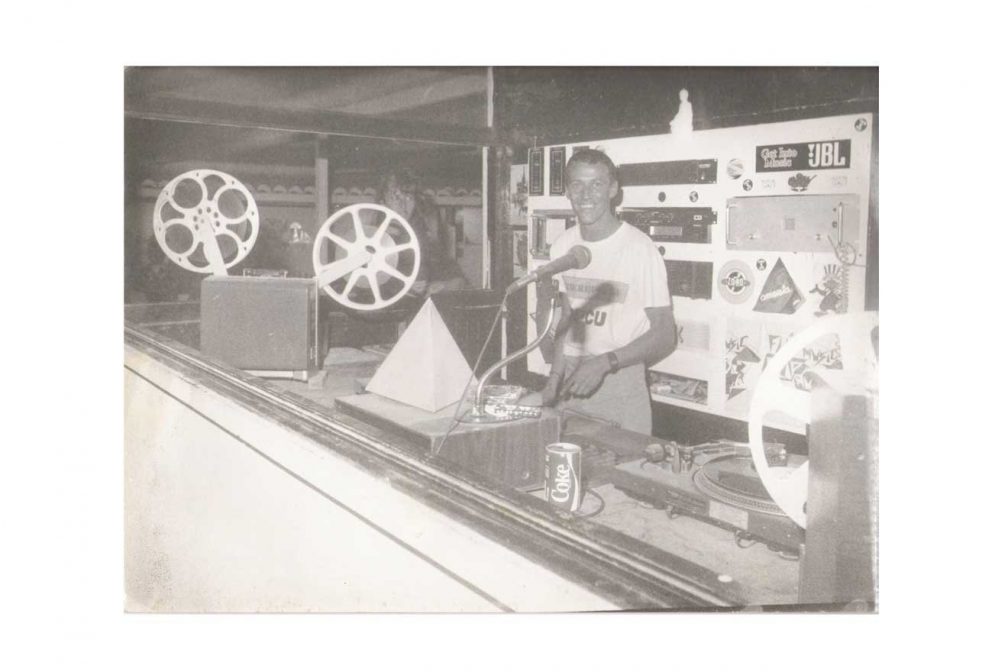
5 ALFREDO AT AMNESIA
San Rafael, Ibiza When Alfredo Fiorito, writer and promoter, fled Argentina's fascist junta in 1976, his musical tastes ran to Jethro Tull and prog rock. They widened fast. By 1984 he was DJ at Amnesia, a glamorous, open air, beachside affair, very different from today. Spinning the earliest house cuts alongside reggae, oddball pop and even 'The Pink Panther Theme', he created a soundtrack that fitted the locale's balmy hedonism. British clubs, by contrast, were tawdry, violent pick-up joints playing chart rubbish. When six astute south London lads hit Amnesia in September 1987, it gave them ideas…
See also: José Padilla at Es Paradis, Ibiza
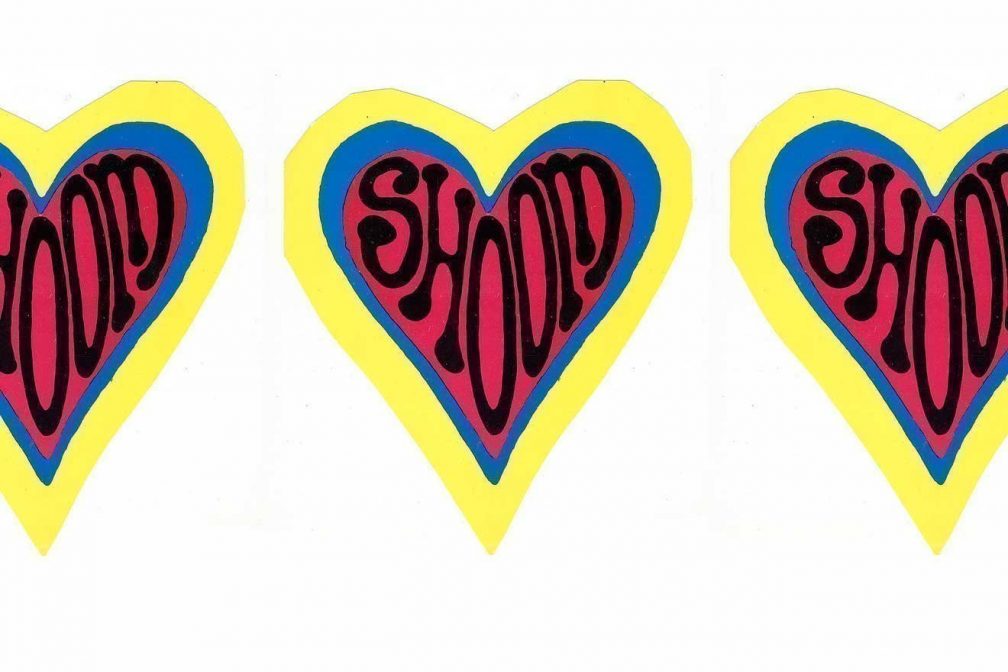
6 Shoom
Fitness Centre, Southwark Street, London Danny Rampling was one of those London lads. He and fiancée Jenni set up a sweaty 300-capacity event called Shoom in autumn 1987. They had no idea their attempt to recreate the Ibizan experience would become the seeding place for dance culture. Within a year their smiley face logo was synonymous with the newborn "acid house" movement. Shoom devotees tied together clattering proto-house with utopian weekend escapism in an idealist haze of MDMA. Soon everyone else would too.
See also: Spectrum at Heaven; The Trip at The Astoria; RIP at Clink Street Studios - all London
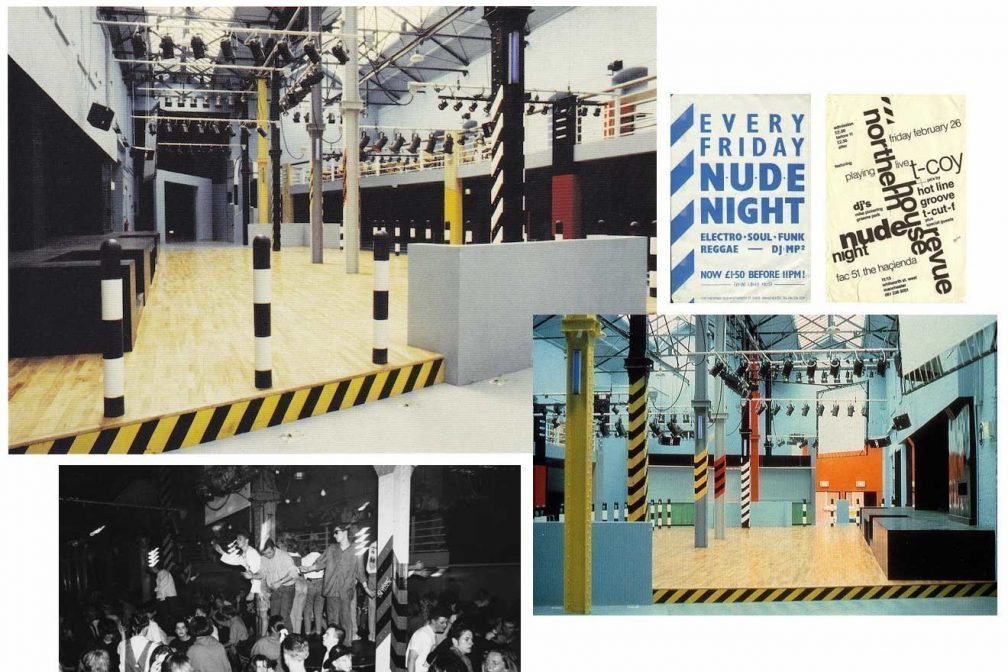
7 Nude
The Hacienda, Whitworth Street, Manchester Decades before he was part of Kasabian's creative team, Mike Pickering was a key figure in Manchester's nightworld. The Hacienda had scraped a living since 1982, propped up by New Order, but when Pickering started the Friday electronic night, Nude, in 1986, he pre-empted the zeitgeist, dropping early house amid his electro/industrial funk sets. Once E arrived in 1988 a phenomenon was born amidst the Hacienda's black, yellow, concrete and steel décor. Dance music hypnotized the city and a wave of guitar bands blossomed – Happy Mondays, Stone Roses, et al. Madchester was born.
See also: Hot at the Hacienda
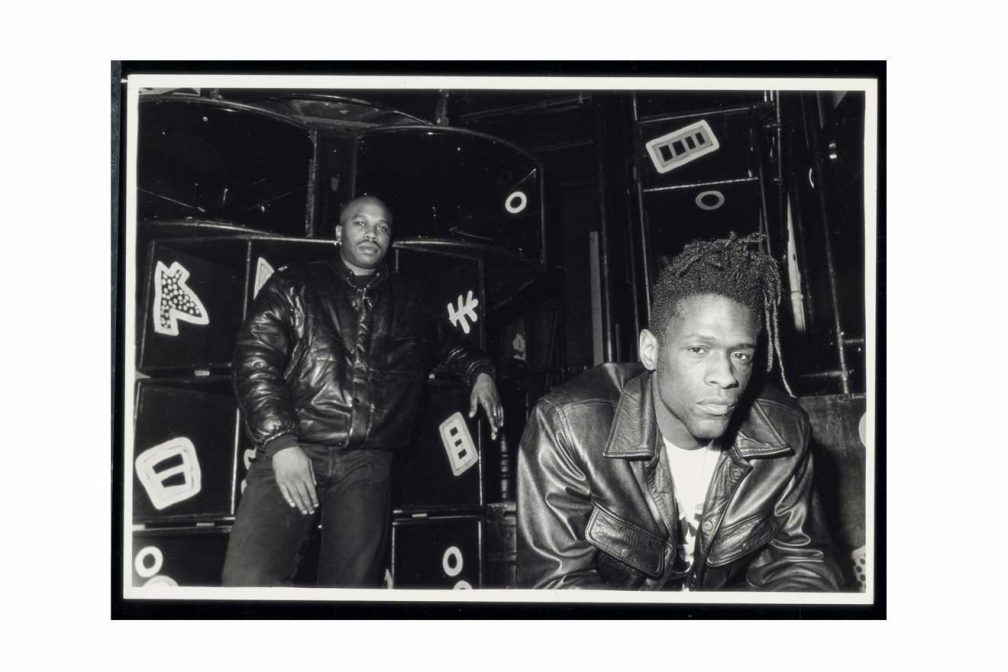
8 Rage
Heaven, Charing Cross Road, London Rage opened in 1989 and was a successful rave night with headline DJs Colin Faver and Trevor Fung. When second room residents Fabio & Grooverider took over the main dancefloor in 1991 something happened. Their mix of British breakbeat hardcore, R&S-style techno and ragga/dub-flavoured tunes led the scene in a new direction, especially, circa 1993, when the beats sped to twice the speed of the basslines. Jungle – later known as drum & bass – was the first club sound of solely British origin.
See also: Metalheadz at the Blue Note; Speed at the Mars Bar - both London
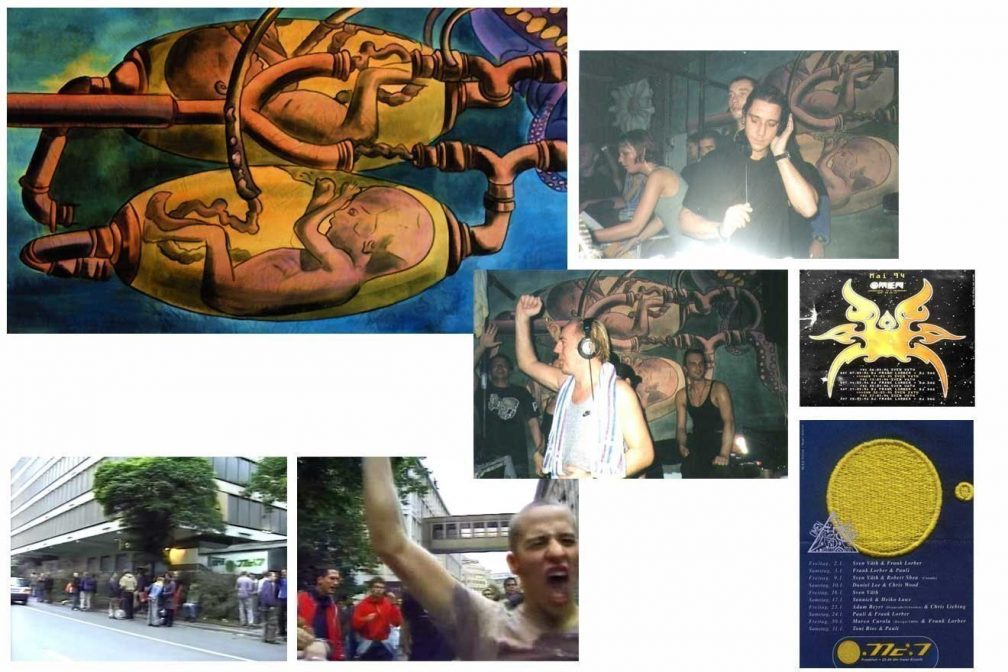
9 The Omen
Junghofstraße, Frankfurt By 1988 Sven Väth was already a pop star with his electro-pop band OFF. However, a trip to Ibiza had opened his eyes to DJing. He invested in a club with fellow producers Michael Münzing and Mattias Martinsohn. It became the test tube where techno mutated into trance. Visitors such as Casper Pound – AKA The Hypnotist – took the sound back to Britain while Münzing (as SNAP!) and Martinsohn (running the Eye Q and Harthouse labels) spread it across the world, as, of course did Väth. The Police let them party in the streets at Omen's closing party in 1998.

10 Trade
Turnmills, Clerkenwell Road, London Trade was the debauched weekly party where gay after-hours culture collided with techno to form hard house. The idea for the club was promoter Laurence Malice's. He envisioned and, for a while, achieved London's ultimate afterparty, running from 4am Sunday morning until 1pm. In the early '90s the DJs played techno-rave, but their sound melded with classic gay hi-NRG. Tony de Vit (who died in 1998) was the most-loved resident but Fergie and Smokin' Jo also started here, as did the popularity of mixed, gay UK clubbing.
See also: FF at Turnmills
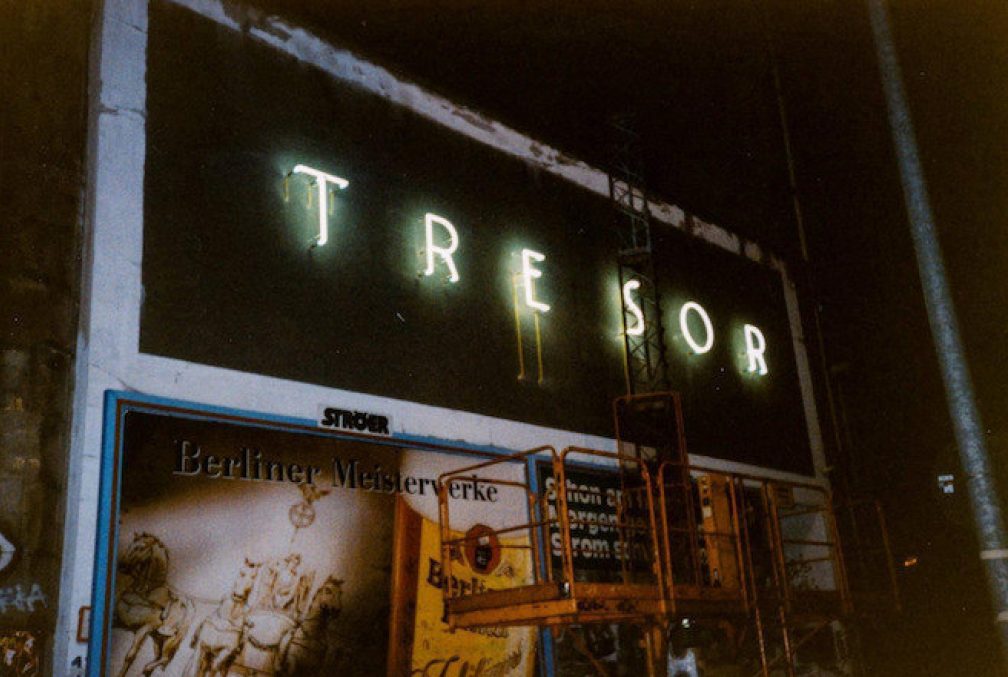
11 Tresor
Leipziger Strasse, Berlin Before Berghain there was Tresor. The UFO club was Berlin's original techno haunt but when it closed, founder Dimitri Hegemann located a new premises, a disused supermarket in old East Berlin. Right from its opening in 1991 Tresor's concrete bunker was packed. Along with its label, Tresor became a vital connection point for the techno underground, from the original Detroit brigade, to rising British talent to German resident DJs such as Tanith. It closed in 2005 but reopened in a new location two years later.
See also: Fuse, Brussels, Belgium
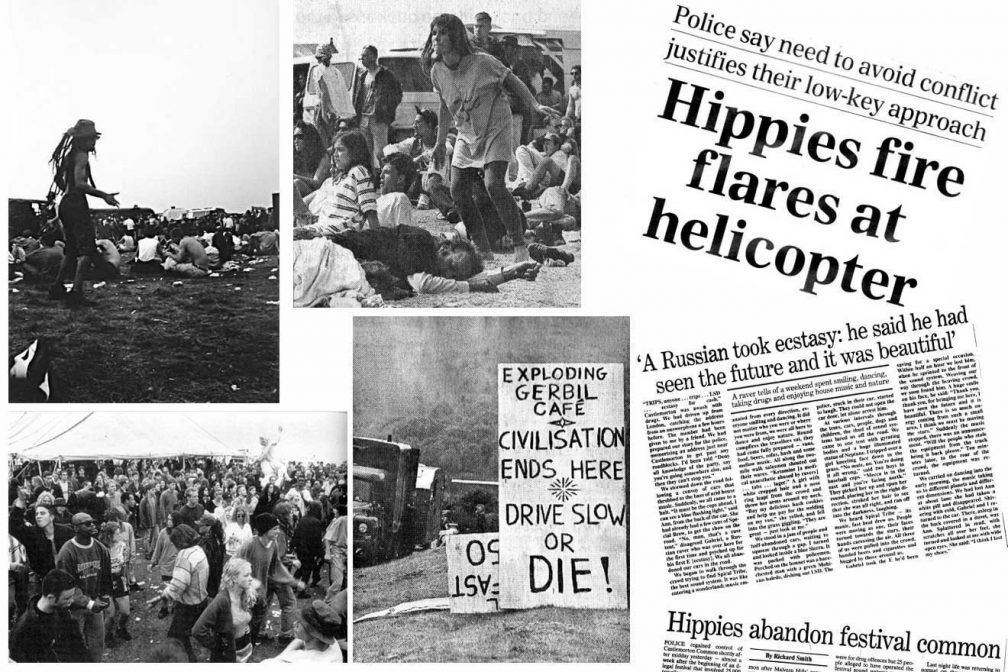
12 Relocated Avon Free Festival
Castlemorton Common, Worcestershire, 1992 Castlemorton was the free party that gave John Major's government their excuse to legislate against rave. By May 1992 travelling sound systems were playing a cat 'n' mouse game with the police but attempts to stop the Avon Free Festival simply pushed them into the Malvern Hills. Soundsystems such as Bedlam, DiY and Spiral Tribe put on a mega-party, attended by tens of thousands, that went on for five days. There's not been a free rave event on the same scale since.
See also: Spiral Tribe at the White Goddess Festival, Camelford, Cornwall, August 1991
Images via Freeparty People
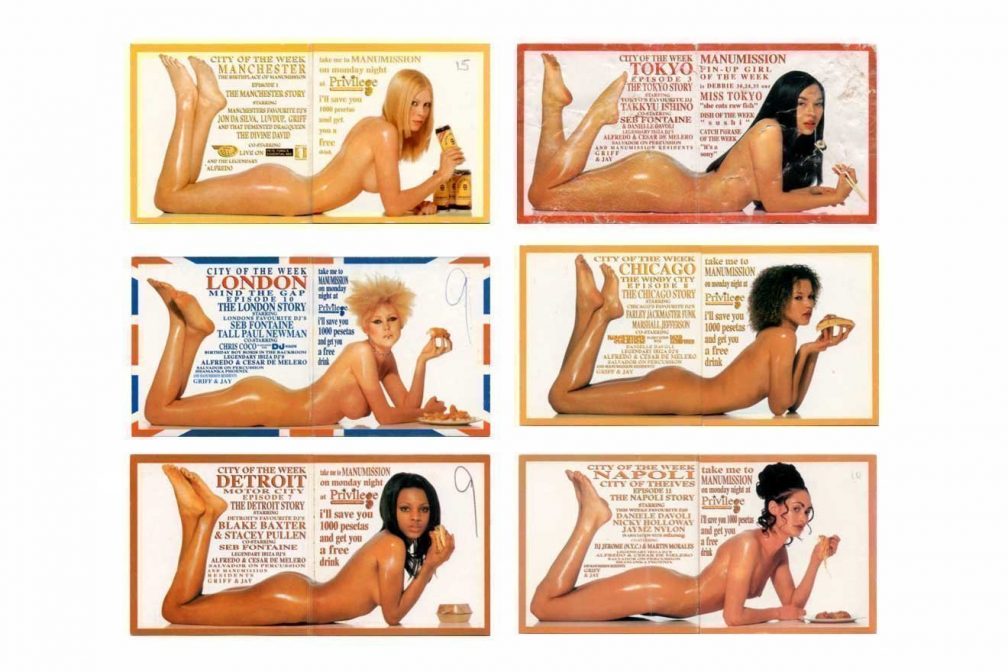
13 Manumission
Ku/Privilege, San Rafael, Ibiza When the McKay brothers Mike and Andy, and their partners, Claire and Dawn, did a runner to Ibiza to escape gangster-infected Manchester nightlife, they kicked off an Ibizan legend. Their night, Manumission, which ran from 1993 to 2007 in its original home, redefined the White Island in the eyes of the world. The Monday night madness included demented cabaret, sex shows, and, of course, Johnny Golden, the Manumission dwarf, followed by insane after-parties at the Manumission Motel. Off-the-rails stories, featuring Norman Cook, Derek Dahlarge, Lisa-I'Anson and many, many more, would fill a book.
See also: Cocoon at Amnesia, Ibiza
14 Happy Days
Elephant & Castle Pub, Newington Causeway, London Early '90s rave barn AWOL had a second room where resident Matt Jam Lamont played US garage. In 1993, AWOL's main promoter asked him to play a new daytime Sunday party at a pub next door to Ministry of Sound. As the superclub closed, Happy Days opened. Since everyone was nutted, Lamont sped up his tunes, amped up the bass, and kept vocals to a minimum. By 1995 the 200-capacity pub was bursting with twice that number. Lamont had paved the way for the UKG that would soon conquer the charts.
See also: Twice as Nice at The Coliseum; Spread Love at The Gass Club - both London

15 Anjuna Beach
The ex-Portuguese colony of Goa had been on the hippy trail since the '60s, its beaches a hashish-marinated hideaway. Anjuna, particularly remote, was especially attractive due to its lack of policing. During the '80s the hippy gig scene was slowly infiltrated by DJs such as Goa Gil, who played Belgian EBM tunes. By the '90s, Anjuna had developed its own variety of trance, fuelled by tropical sun and LSD rather than MDMA. Participants started labels such as Tip and Dragonfly and the whole thing exploded in the mid-'90s when Paul Oakenfold's Perfecto label got behind the scene.
See also: Haad Rin Beach, Koh Pha Ngan, Thailand
Images via Goa Gil's scrapbook
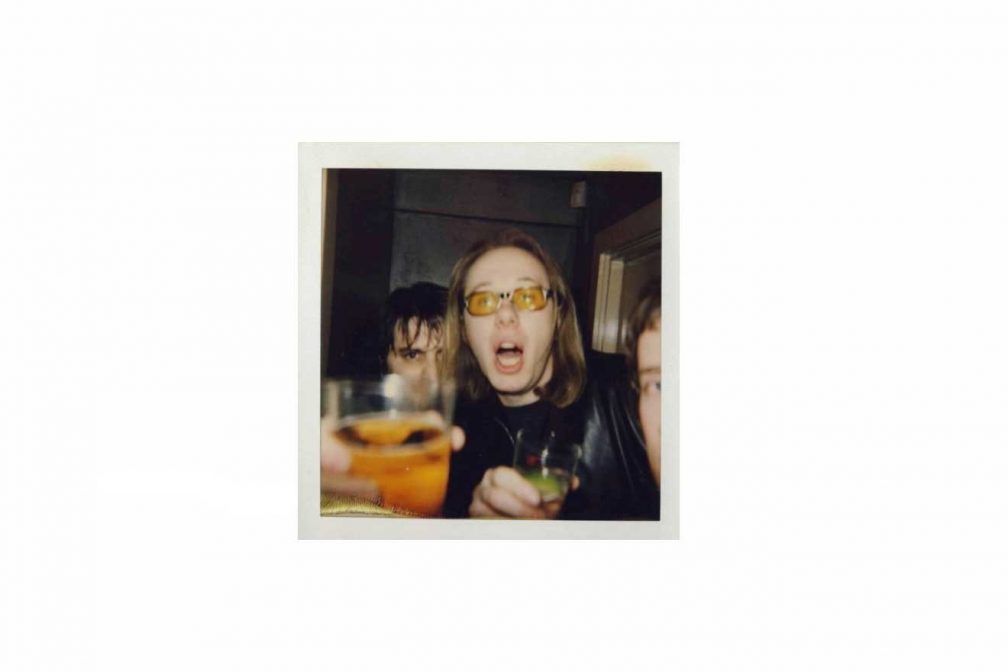
16 The Heavenly Social
The Albany, Great Portland Street (later Turnmills, Clerkenwell Road) By the mid-'90s, house music had clambered up its own rectum; too many glam nights and faceless grooves. For a run of 13 Sunday nights in 1994 in the basement of The Albany pub, a venue that could hold around 150, Heavenly Records launched the Chemical Brothers – then called the Dust Brothers – on an unsuspecting world. Alongside DJs such as Andrew Weatherall and Justin Robertson, this bouncing booze-pit saw acid techno played beside hip hop and rock. Big Beat was born.
See also: Big Beat Boutique at The Concorde 2, Brighton

17 Thunderdome parties
Various locations, Holland ID&T now promote huge festivals such as Tomorrowland but its directors originally made their millions from dance music's noisiest sub-genre - gabber. Starting with an event in Utrecht called The Final Exam in 1992, Thunderdome organised massive raves that popularized techno at demented speeds, danced to by thousands of Dutch kids in customised tracksuits (including a few of today's trance heavyweights). The title of ID&T's 1993 compilation, 'Fuck Mellow, This Is Hardcore From Hell', says it all.
See also: Hard As Hell parties, Holland

18 Gatecrasher
The Republic, Arundel Street, Sheffield Simon Raine and Scott Bond's Gatecrasher parties became a regular club night in 1997. By 1999, with resident DJ Paul van Dyk, it had become a national phenomenon, the spiritual home of trance, a sound dominating both clubland and the charts. It was Mitsubishi insanity, made all the more colourful by the regulars: the cyber-kids, dummy-sucking, spike-haired, pupil-popped nutters in fluoro gear. The venue burned down in 2007 and is now being developed into student flats with a courtyard shaped, in tribute, like a pair of decks.
See also: Cream at Nation, Liverpool
19 Co-op
Velvet Rooms, Charing Cross Road, London (later Plastic People, Curtain Road) In the late '90s and early '00s a small but dedicated scene, including the likes of 4Hero and Phil Asher, developed around Co-op. Resident DJ IG Culture would MC in mellow West-Indian tones, occasionally hitting a handheld toy siren, and dropping a mix wherein jazz, soul, Afro rhythms and hip hop flowed into techno at its silkiest, sometimes accompanied by live keys. The ganja smoke-filled dancefloor would be flecked by mini-lazers. Co-op's sound became known as broken beat and flavours music to this day.
See also: Inspiration Information at Notting Hill Arts Club, London
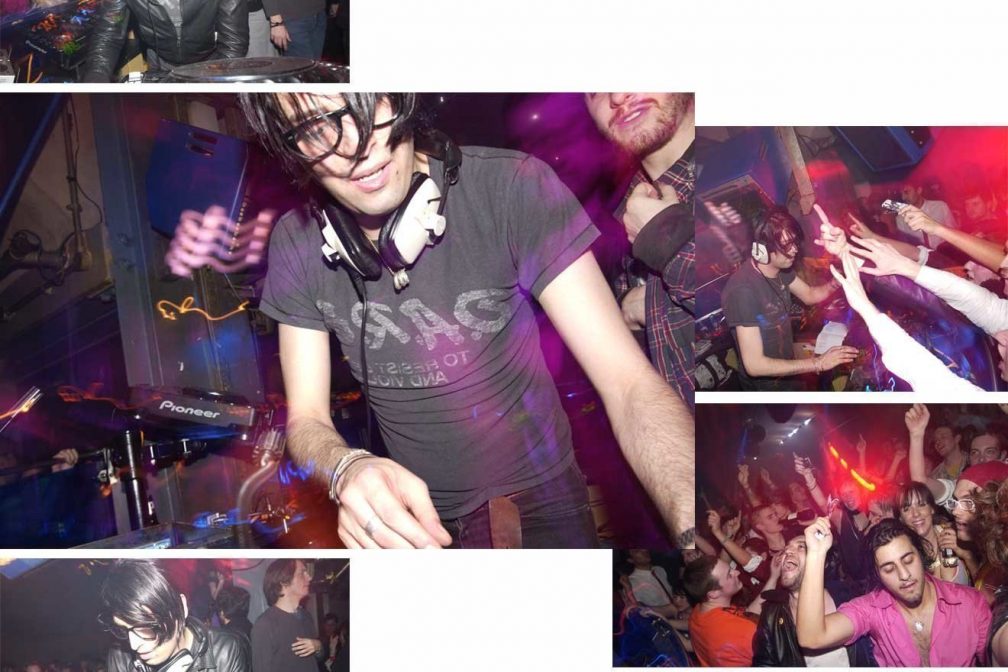
20 Trash
Plastic People, Oxford Street, London (later The Annexe, Dean Street; The End, West Central Street) By the millennium superclubs, superstar DJs and endless, characterless prog house had rendered rave culture toothless and bloated. Cue Erol Alkan. Blossoming out of indie night Going Underground, Trash took over Monday's at Plastic People (in its original Soho location). Alkan's blend of glam, electro, punk and rock eventually veered into dance and electronic, pre-empting both electro-clash and new rave, and seeing sets by LCD Sound System, Klaxons and others, before eventually closing in 2007.
See also: Nag Nag Nag at Ghetto, London

21 Circo Loco
DC10, Ibiza Jamie Jones, Seth Troxler, The Martinez Brothers, Davide Squillace, Tale Of Us, Laura Jones, Visionquest, Luciano: the list of 2015's top DJs inspired by CircoLoco at DC10 is a very long one. It's the club whose freedom, decadence and, most of all, music put minimal on the map, that made Ibiza, and, arguably, techno, tech-house and house, 'cool' again. Circo Loco set a template, inspiring a whole generation of club promoters, from the Below crew in Birmingham to Ketoloco in Leeds, try to recreate in their own backyard what they'd experienced in Ibiza. Aside from perhaps Berghain, no other modern club has had such an influence on the way we dance today.
See also: Cocoon, Amnesia, Ibiza
22 Eskimo Dance
London and rest of UK Wiley launched the Eskimo Dance while still a rising vocalist/producer back in 2002. The rave brought together the fiercest and finest DJs and MCs on the scene and the first one was a rowdy affair in North London, with Dizzee Rascal, Tinchy Stryder, D Double E, Flow Dan, Donae'o, Crazy Titch and many more in attendance. Eskimo Dance continued until 2006 and was the place to see and feel the electrifying atmosphere of one of the most crucial sounds the UK has produced. Named after Wiley's defining 'Eskimo' riddim and his grime subgenre eskibeat, the party's legacy simply adds to his Godfather status. In 2012 it got a reboot and still happens regularly in London and across the country.
See also: Sidewinder, London, Niche, Sheffield
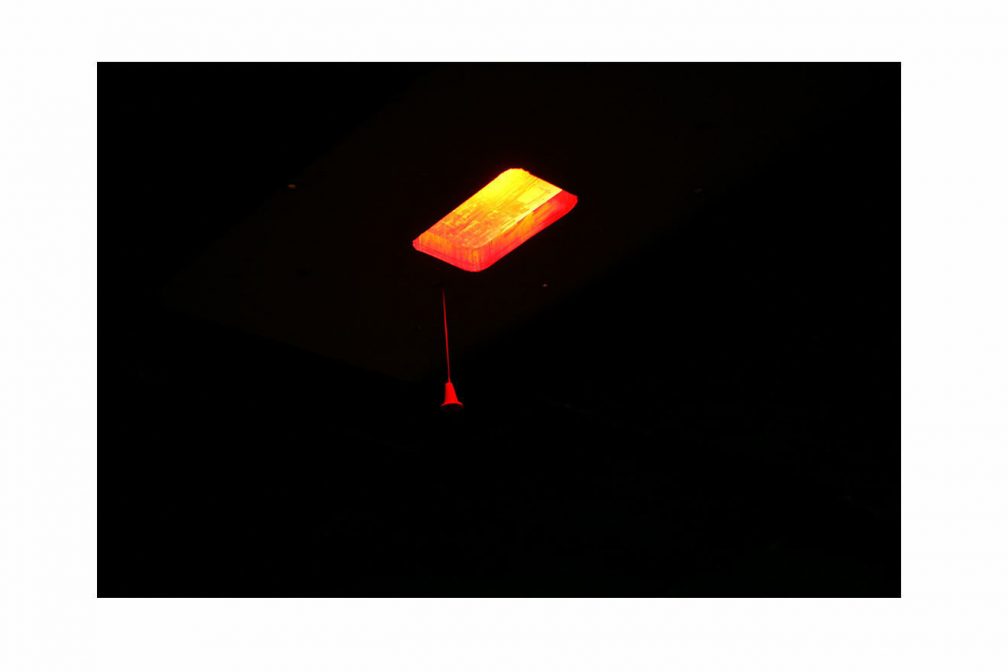
23 FWD>>
Plastic People, Curtain Road, London (later Dance Tunnel, Kingsland Road) Ah, dubstep, so much to answer for. Its initial innovation is perhaps now forgotten amid bro'-step's EDM co-option. Rewind to 2001 and it was new, innovative digital dub, created by a tiny coterie of producers in Croydon and Bristol. It needed a showcase outlet and pirate station Rinse FM was up for promoting it. Where better than the 200-capacity Plastic People with its lethal sound system that DJs such as Mala, Benga, Skeam and Kode9 used to broadcast a style that would eventually eat pop.
See also: DMZ at Mass, Brixton, London; Subloaded at Trinity Centre, Bristol

24 Perfecto Las Vegas
Rain Club, The Palms, Flamingo Road, Las Vegas Long before the EDM explosion, Paul Oakenfold had US success with his music. His Perfecto residency between 2008 and 2011, however, heralded America connecting with dance culture at a whole new level. In a 3000-capacity venue, it was tailored specifically to do so. After entering through a glitzy gold-mirrored mosaic tunnel, clubbers were treated to a full-on show with 75 circus performers, mind-boggling visuals and, for VIPs, booths in the sky or banquettes filled with water.
See also: Calvin Harris at Hakkasan, Las Vegas
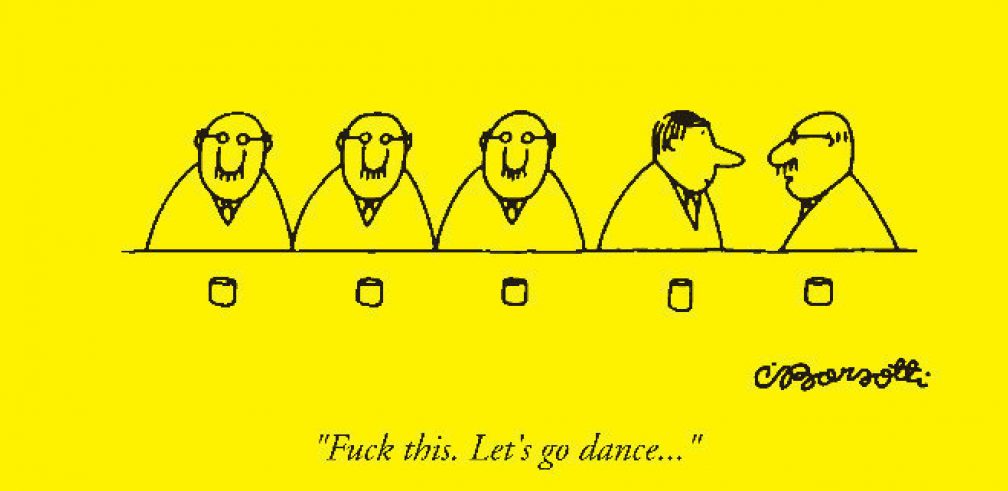
25 Secretsundaze
Various venues in London Revolutionising the way we club in London - and indeed the UK - Secretsundaze ripped up the established paradigm of the '00s by eschewing the capital's superclubs for unusual locations, swapping Saturday night for Sunday afternoon, and being absolutely uncompromising in its music policy. The wave of minimal techno that worked as an aural colonic irrigation after the excesses of post millennial dance music; the explosion of warehouse-style clubbing in London and beyond; the down-to-earth demeanour of Berlin and Detroit underground stars visiting the UK; in fact, the 'underground becoming the overground': it can all be traced back to the runaway success of Giles Smith and James Priestley's baby.
See also: Mulletover at various venues, DJs Can't Dance at various venues, Stink at the T Bar, all in London
[Lead photo: Shaun Bloodworth]

